Do you have a question about the Parker Hiross Polestar-Smart PST120 and is the answer not in the manual?
Importance of reading and keeping the manual for the machine's life and for any operation.
Instructions for avoiding danger to persons and damage to equipment, including required technician presence.
General safety advice, use of disconnecting switch, and user responsibility for load limits and seismic protection.
Table listing residual risks, manner of exposure, and necessary precautions for various parts of the machine.
Guidelines for transporting the packed unit: keep upright, protect from agents and impacts.
Instructions for safe handling and lifting of the unit using a suitable fork-lift truck, avoiding impacts.
Steps for inspecting the unit upon receiving, checking for damage, and notifying transport company.
Recommendations for storing the unit, especially if stacked, in a clean place protected from weather.
Instructions for correct installation, warranty terms, fire risk assessment, and pre-filtration near air inlet.
Required clearances around the unit: 1.5m around and 2m above for vertical expulsion.
Notes on air-cooled (Ac) and water-cooled (Wc) versions, including condenser water inlet filter.
Advice on placement in clean area, air quality, and ducting of extracted air.
Guidelines for safe electrical connection, including cable types, local laws, and circuit breakers.
How to connect the condensate drain properly, avoid closed circuits, and dispose of condensate.
Checks to perform before commissioning: installation, air inlet valves, power supply, and cooling water circuit.
Step-by-step guide for starting the dryer: switch power on, wait for preheat, press start button.
How to operate the dryer: leave on during compressor working, automatic mode, bypass for excess flow, avoid temp fluctuations.
Procedures for stopping the dryer: stop 2 mins after compressor stop, ensure no air enters when disconnected.
Description of the control panel with display, main switch, power LED, energy saving LED, and warning LED.
Explanation of dryer status, power modes (ON/OFF), remote OFF mode, and energy saving function.
How to access and change operating parameters (e.g., dew point units, hours, temperatures, drain modes).
Explanation of alarms (switch off) and warnings (signal only), and procedures for identification and reset.
General safety and procedural notes before maintenance: pneumatic circuit, power supply, original parts.
Information regarding refrigerant handling, safety classifications, and warranty exclusion for unauthorized replacement.
Recommended maintenance schedule (daily, weekly, 4/12/36 months) for optimal dryer efficiency and reliability.
Guidelines for dismantling, recovery of refrigerant and oil, and recycling disposal of components.
Visual representation of the dryer's installation components and layout with numbered parts.
Table of technical specifications, including weight, refrigerant, temperatures, electrical data, and connections.
List of available spare parts with corresponding model numbers for different models and kits.
Diagrams showing the internal components of the dryer for PST 120-180 (Ac) and PST 220-350 (Ac/Wc).
Technical drawings with dimensions for various dryer models, including overall size and center of gravity.
Schematic diagram of the dryer's refrigerant system for different models and versions.
Electrical diagrams illustrating the wiring of the dryer's components, including panel layout and circuit schematics.



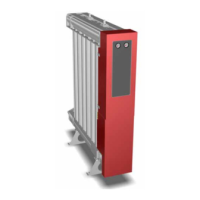

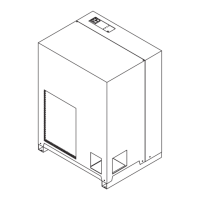

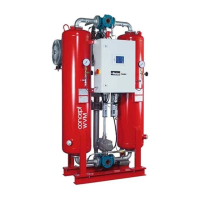

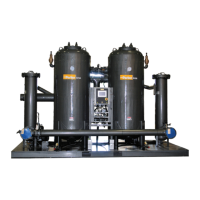
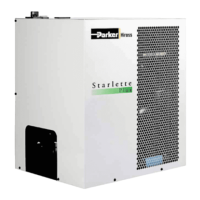

